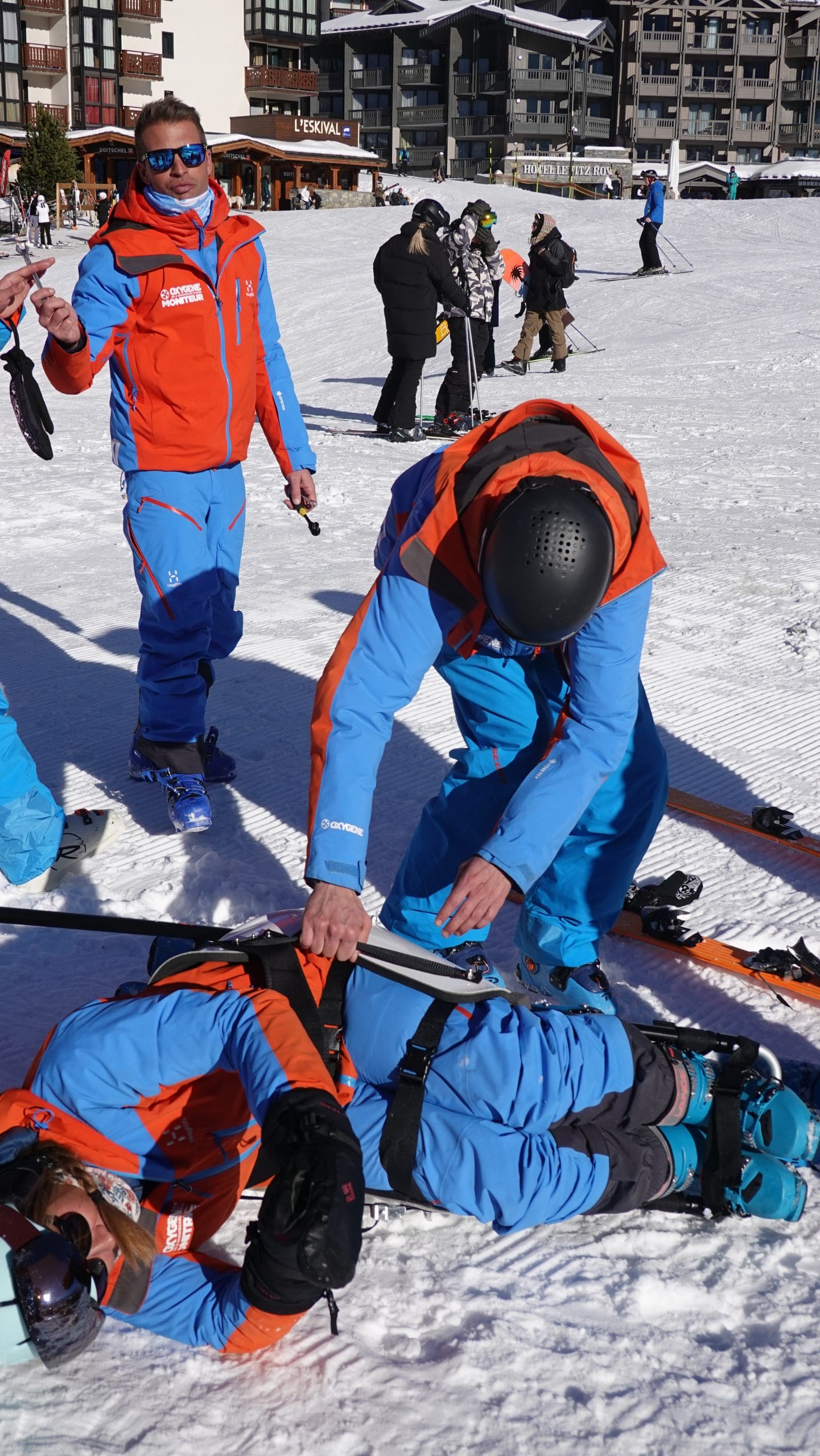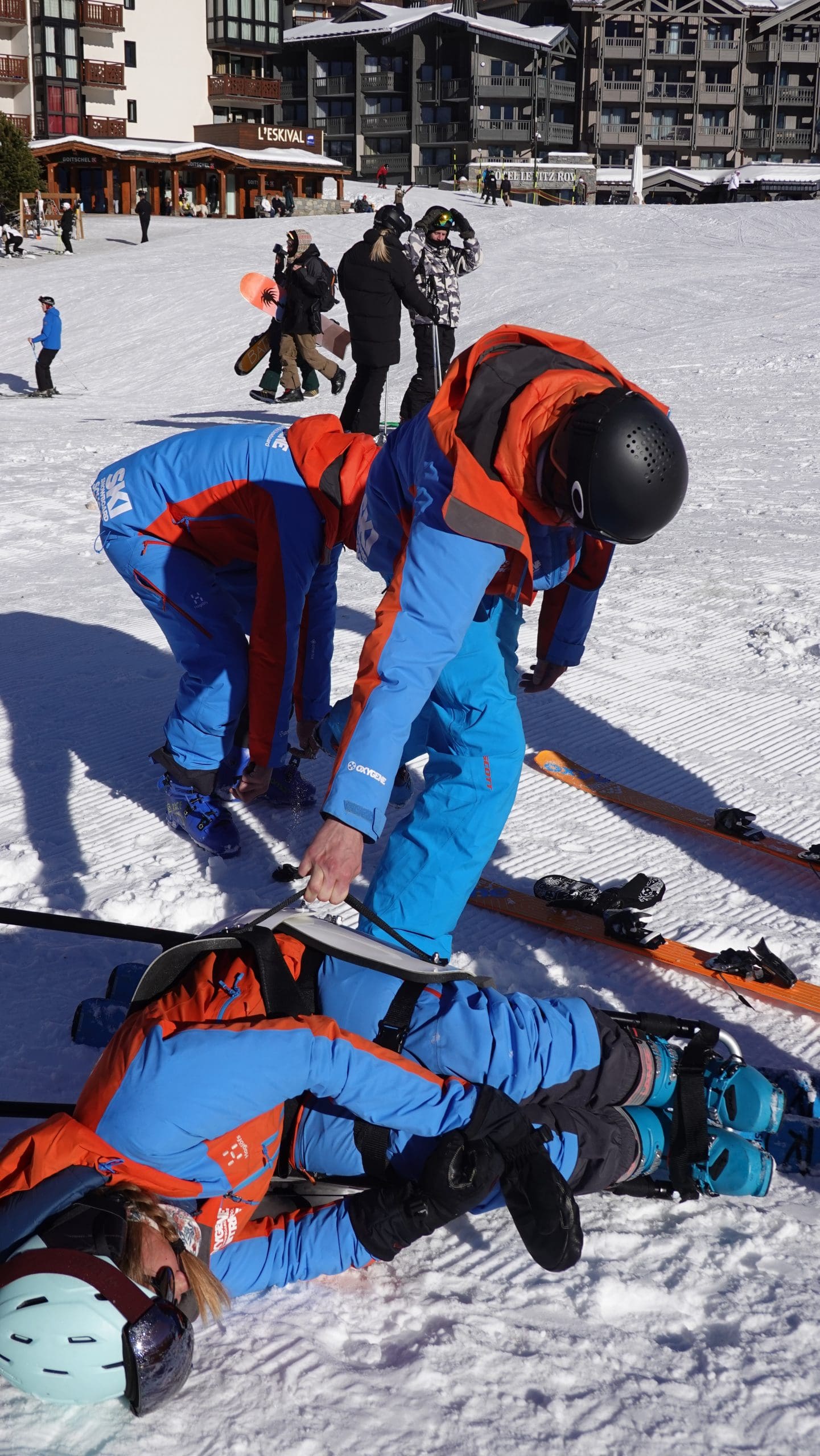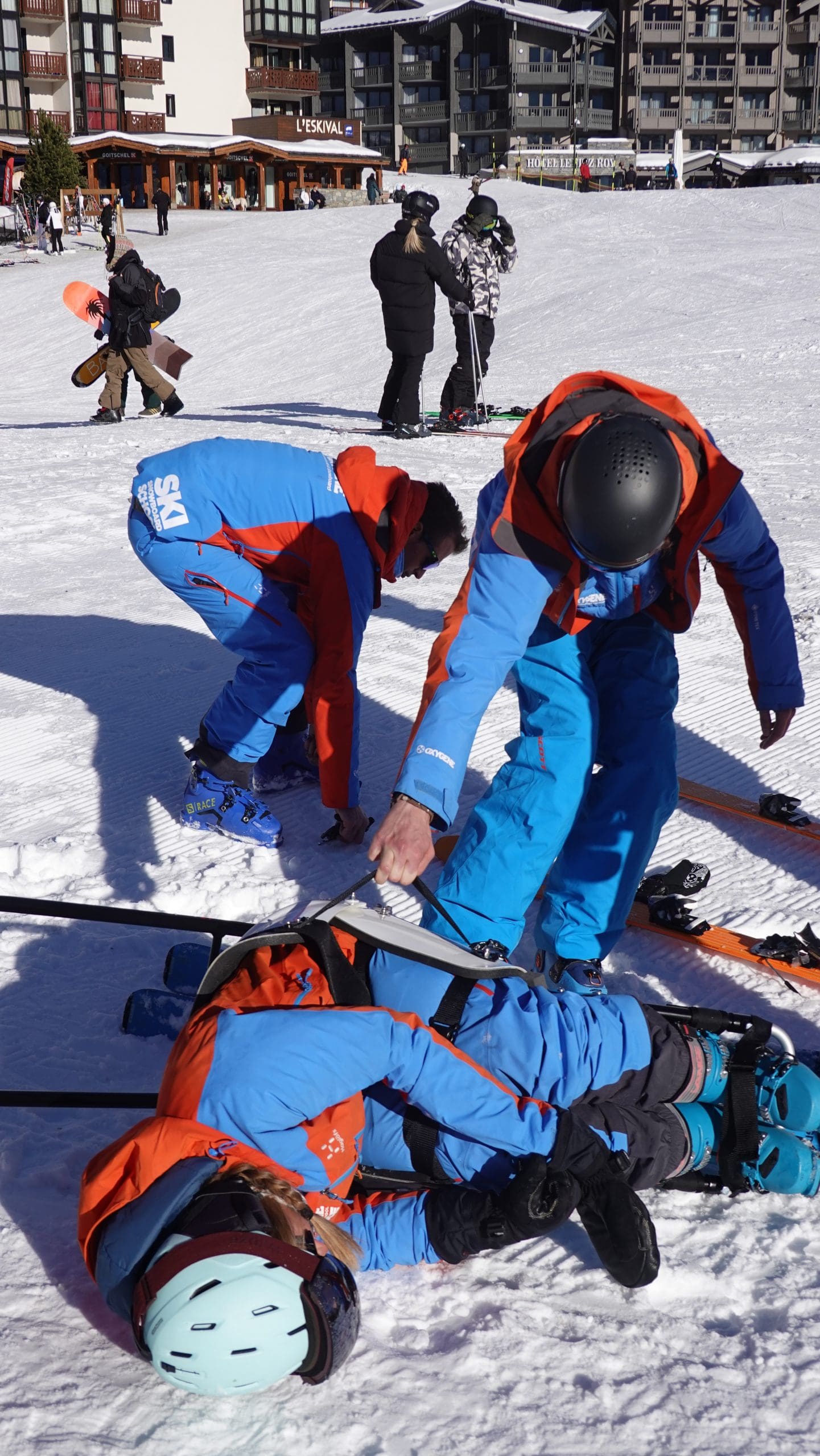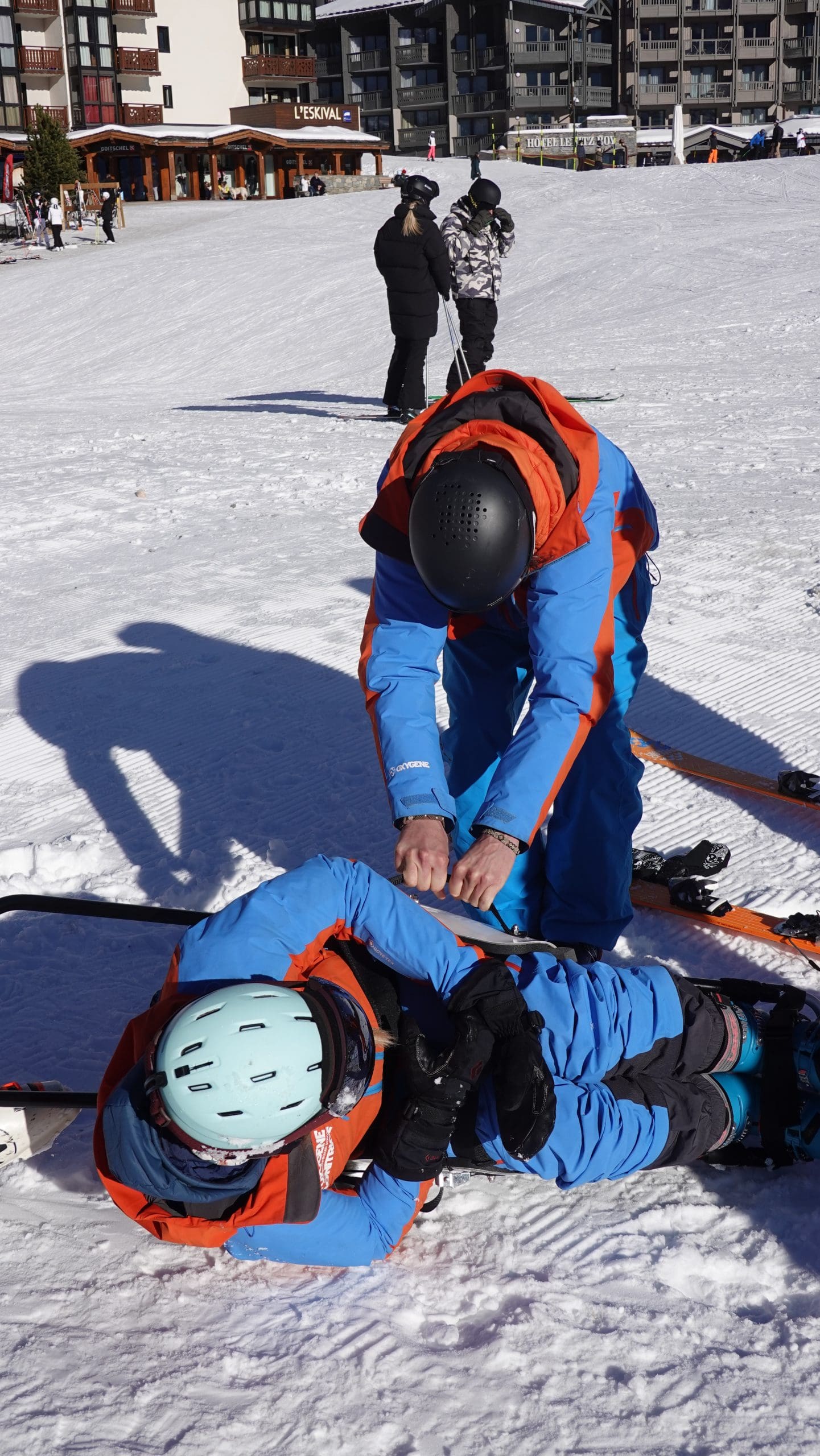A DAY WITH FUTURE ADAPTIVE SKI INSTRUCTORS
At the beginning of each season, training courses for instructors are organised to teach them the techniques related to the different adaptive ski practices. There are 3 categories: seated skiers, standing skiers and visually impaired skiers.
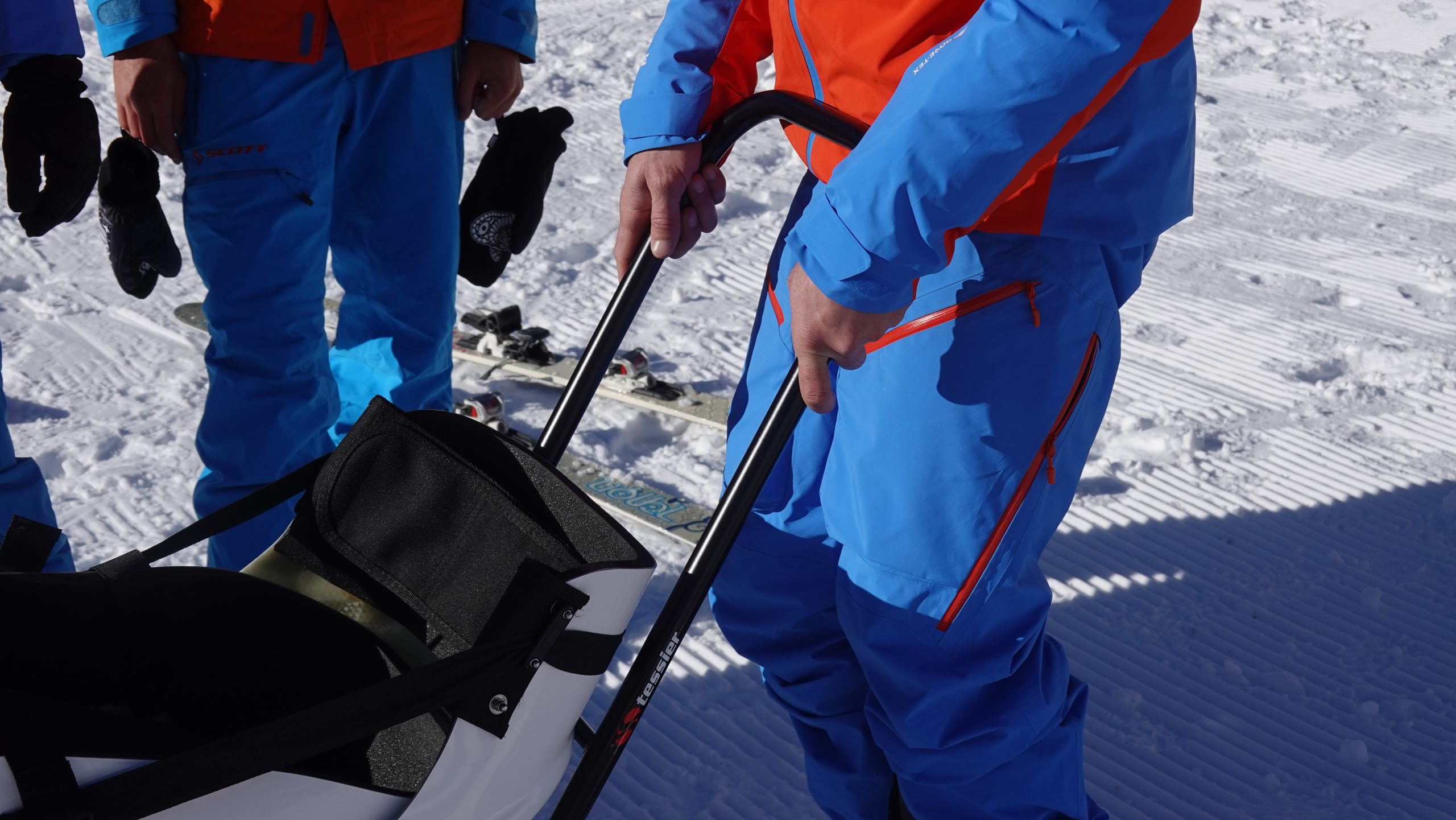
8:30 am,
meeting in Val Thorens
It’s 8:30am, let’s go to Val Thorens for an instructor’s training day. I set off to meet the 8 volunteer instructors. On the agenda, the teaching of sit-skiing, one of the disciplines of adaptive skiing.
Sit ski is the solution that allows people in wheelchairs or with difficulty coordinating their lower limbs to ski independently. It allows people to share the sensations of skiing with everyone and has been supported for many years by Oxygène.
Thanks to machines specially designed to make skiing accessible to all, sit ski can be practiced alone or with others. An instructor or a friend can pilot the machine.
The specificity of this sport is that sit-skiing can offer total autonomy on the slopes thanks to the “stabillos”.
This equipment is designed to make skiing easier for people with disabilities, and to allow them to move around independently on the slopes.
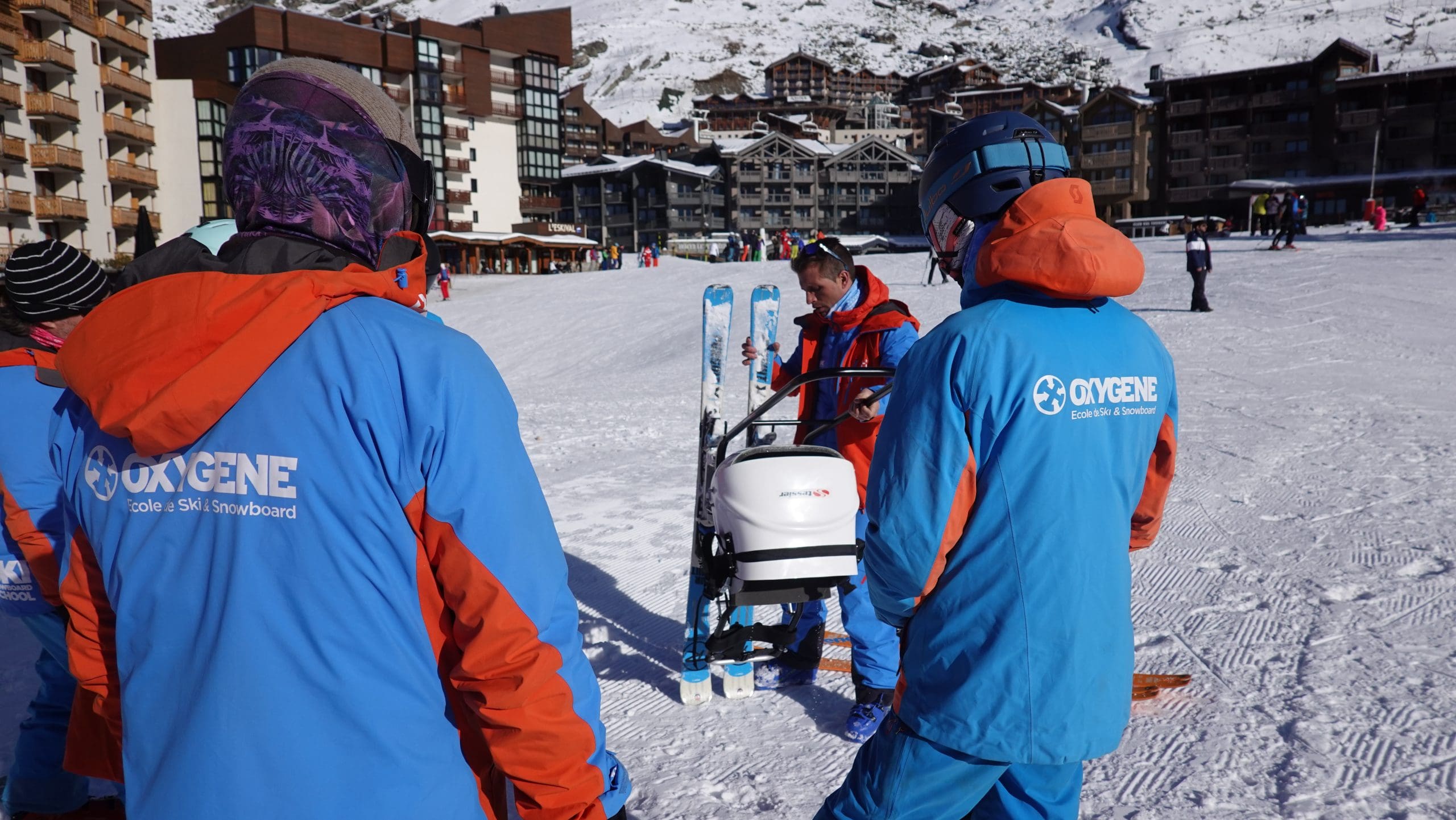
9:00 am,
start of the course
We meet with the instructors and the trainer at the foot of the slopes for a presentation of the equipment. After a few theoretical and technical about mechanics, comes the fateful question:
Why do you want to learn to teach adaptive ski?
Some are already ready to answer, and others a little less so. Their motivations are varied, but Pierre-Louis, an instructor in Val Thorens, says: “If I couldn’t ski, I’d like someone to make me ski”.
10.00 am,
first descent & first lift
The instructor then quickly moved on to practice because Val Thorens is not known for its tropical temperatures. It’s freezing up there.
You don’t learn if you don’t try, so here we go!
For the first slopes, we try it with the empty chairs and we quickly arrived at the bottom.
But in front of the ski lift, the instructors were a bit worried. Under the amused looks of the skiers who observe them trying to remove the security of the chair. The first boarding went very well.
11:00 am,
waking up the rider is
difficult
After the first successes of the morning, it was time to put some difficulty into it all!
First challenge, doing a 180 with the empty chair – doing a safe U-turn and ending up upside down on the slope.
One or two falls later, the instructors have already mastered all the techniques of handling the chair: managing jumps, tricks, skiing backwards (switch)…
You should have seen them all going down the slope with their empty machines, real experts!
2:00 pm,
no time for a digestive break
After having gained confidence and mastered the empty machines, we now have to try with someone inside. Lucile volunteered to sit in the sit-ski. The trainer showed her the steps to follow and the potential difficulties encountered. It’s tricky to get the straps under the buttocks of someone you hardly know, so you might as well anticipate!
Once everything is explained, it’s time to practice.
Obviously, there are a few oversights, which is normal for a first time, but everyone followed the instructions very well.
The first slope with an instructor in a chair was more eventful than expected. After a fall from each pair, and some good laughs, it was time to face a new lift. Going through the control gate is already an ordeal in itself. Keeping the door open, while moving forward with the chair, proves to be more complicated than expected. Especially for some.
5:00 pm,
we calmly take stock
The first two trips to the ski lifts brought the chairlift to a halt. And many mocking smiles from the tourists. After a few learning errors, our instructors were ready and overcame the ordeal of the lifts with ease.
They mastered sitting skiing with a passenger in less than two runs.
I was fascinated by the energy and determination of the instructors to master sit-skiing. They gave their all to make their future students smile one day.
Adaptive skiing and sit-skiing are becoming more and more popular in ski resorts, especially those where Oxygène Ski School is present. If you know someone who would like to try skiing, but is afraid of not being able to, please contact us! We believe that anyone can learn to ski with a little encouragement and support.
Ps: if you’re reading this, you’ve made it to the end of the article. Good for you! To thank you, here are exclusive pictures of the training
